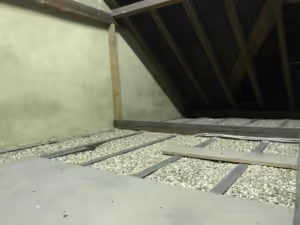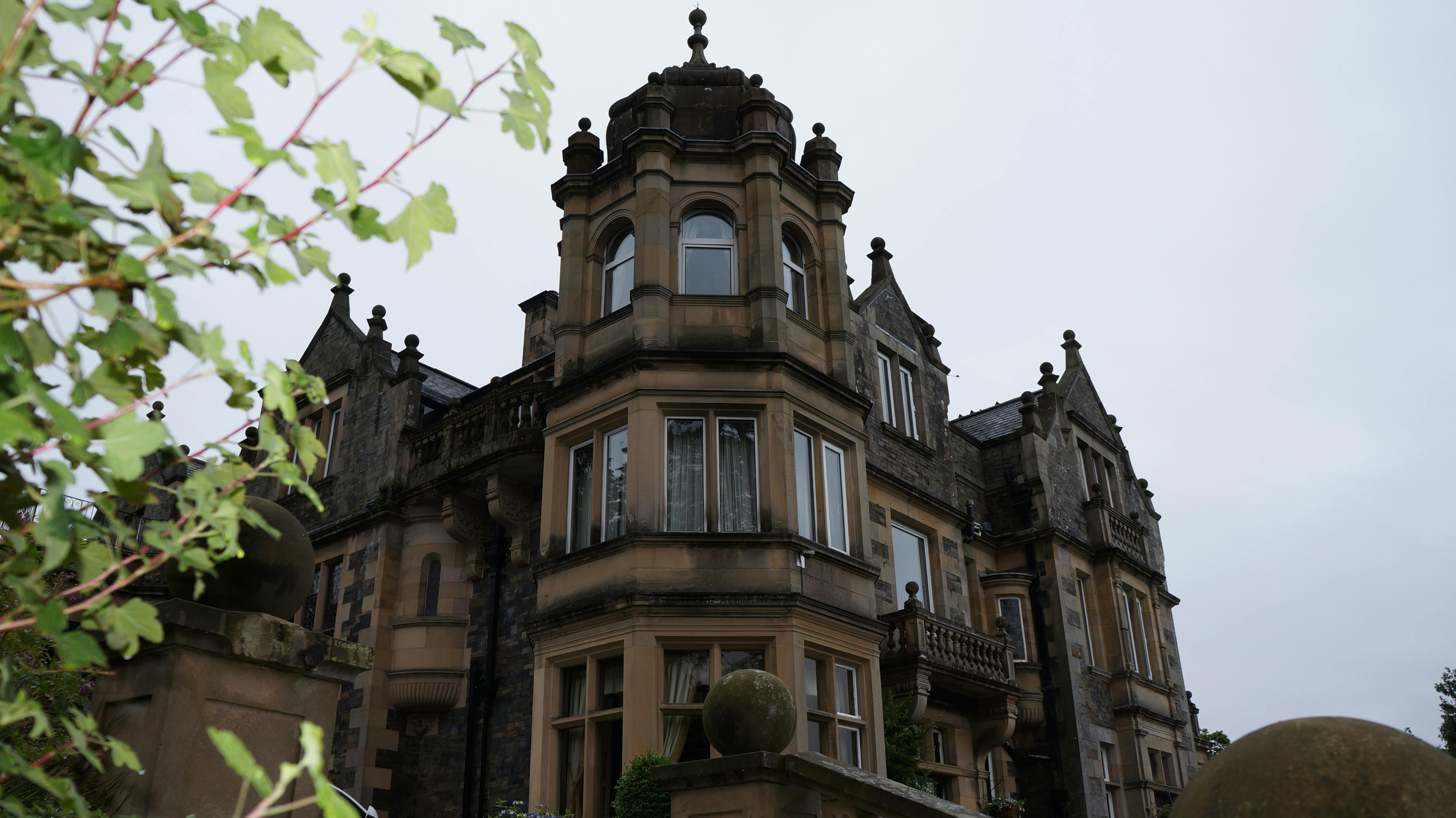
If you have discovered that your home is insulated with vermiculite, you are probably concerned about the potential dangers of vermiculite insulation in the UK.
If you are worried about the dangers with vermiculite insulation in the UK, it is important to know what vermiculite actually is and whether or not your property is at risk and what the best next steps are.
What is vermiculite?
Vermiculite is a mica-like mineral mined around the world and used in a variety of commercial and consumer products because it is fire-resistant and has good insulation qualities. Similar to mica, vermiculite is a flaky natural material which expands when it is heated. It is used for many purposes including fire retardants such as steel boxings and coatings, as a fertiliser, in potting soil, and in home insulation.

What is vermiculite insulation?
Vermiculite is just one of many insulation products used in attic or loft insulation. Vermiculite insulation is a granule/pebble like pour-in, loose-fill product. Vermiculite loose fill insulation is exactly that, a loose fill insulation.
Where does vermiculite insulation come from?
There was a large vermiculite mine in Libby, Montana that at one point, made up for approximately 80% of the world’s vermiculite supply. What most didn’t know, however, was that all impure vermiculite from this mine held asbestos crystals. In fact, miners harvested impure vermiculite since 1881.
One chemical processing plant, W.R. Grace, knew about the vermiculite toxicity but reinforced their products and put their factory workers at risk for dangerous exposure to the mineral anyway.
A rebrand changed vermiculite from this mine to “Zonolite” on the market. Moreover, this new zonolite was sold for a long time until the Libby mine was finally shut down in 1990.During the 1920s and 1930s, when asbestos knowledge was practically non-existent, the Libby Mine in Montana, Canada, produced Zonolite® Attic Insulation – and possibly other brands which may have contained amphibole asbestos – to supply the majority of the world market in vermiculite-based insulation.
Hundreds of the Libby mine’s employees and residents of the town were diagnosed with mesothelioma, an aggressive cancer that is known only to be caused by asbestos exposure and many of these residents were able to secure financial compensation for their families through litigation.
How common is vermiculite in the UK?
Within the UK and Europe, virtually all of what you read about vermiculite is focused on issues in the United States.
Is this something you need to worry about? Very little Libby vermiculite was exported to Europe. So the issues related to Libby vermiculite are much less relevant outside of the USA. Modern European vermiculite suppliers ensure that the products sold are properly tested, meet international standards and are safe to use.
Within the UK, we see many properties on a weekly basis with vermiculite insulation. This is often in both residential and commercial premises.
Is vermiculite toxic?
Vermiculite itself is safe to use; there is no evidence that any acute or chronic toxicity or carcinogenicity exists from long-term exposure to vermiculite. However long-term exposure to vermiculite can

What are the health effects of vermiculite exposure?
Although many of the problems that have been reported with vermiculite insulation originate in America, there have been some similar dangers reported in the UK in line with silicosis a lung fibrosis caused by the inhalation of dust containing silica.
Mesothelioma incidence in America is also known to be high in commercial gardeners and other occupations which deal with large amounts of loose vermiculite. Note the appearance of the vermiculite.
Based on current information, there is no evidence that vermiculite currently being sold since the late 1990’s available for horticultural purposes (e.g. potting plants) is a health risk when used as directed.
Does vermiculite insulation contain asbestos?
Pure vermiculite should not contain asbestos. Today, most vermiculite is safe. However, that is not to say it cannot contain asbestos.
Not all vermiculite produced before 1990 contains amphibole asbestos fibres. However, to be safe and in the absence of evidence to the contrary, it is reasonable to assume that if your building has older vermiculite-based insulation, it may contain some asbestos.
In recent years, many steps have been taken to remove asbestos from buildings and commercial products, in an effort to reduce human exposure of asbestos and exposure of vermiculite, which can lead to asbestos related disease, notably asbestosis. Asbestos, however, is still a relevant hazard today, found in many different forms.
Asbestos still exists in hundreds of older products as well as in trace amounts in newly manufactured products such as vermiculite.
Vermiculite and asbestos……
These products can cause health risks if disturbed during maintenance, renovation or demolition. However, there is very low risk to your health if the insulation is sealed behind wallboards and floorboards, isolated in an attic, or otherwise kept from exposure to the interior environment.
Not all vermiculite produced before 1990 contains asbestos fibres. However, to be safe and in the absence of evidence to the contrary, it is reasonable to assume that if your building has older vermiculite-based insulation, it may contain some asbestos content.
Nevertheless, as with any dust, workers should take precautions and avoid long, high-level exposures to vermiculite and other materials that release dust.
Does my vermiculite insulation contain asbestos?

Is there an easy way to visually tell? Unfortunately not, asbestos fibres in vermiculite are too small to be seen by the naked eye. Only a trained technician using a microscope can see asbestos fibres.
However, it is very simple to analyse vermiculite for asbestos contamination. Sample collection of vermiculite should be done by a professional. If you decide to remove vermiculite insulation from your attic, have it done by a professional who has the required equipment necessary to capture asbestos and vermiculite dust and debris fibres.
Do you need asbestos testing for vermiculite insulation within the UK, Sussex and London? Summit Environmental can help.
Vermiculite insulation removal?
First identify if asbestos content is present as this will define the removal method.
If asbestos isn’t present and you are keen to remove yourself, dust control measures should be used in preference to Personal Protective Equipment(PPE) where ever possible ensure you use correct Respiratory Protective Equipment (RPE) and Personal Protective Equipment (PPE) gloves and suits and appropriate tools to protect yourself from the dust generated by disturbing the insulation. We would always advise using a company with appropriate tools, training and experienced methods and equipment for asbestos removal even if asbestos isn’t present.
Had a survey and identified the vermiculite insulation contains asbestos, what should you do?
If asbestos content is present, the materials will need removal in line with the requirements for asbestos remediation. Depending on the fibre types contained within the vermiculite, the materials, friability and location will define the removal method. You should never attempt to remove it yourself, so calling in a professional company to help you is essential.
Final Thoughts?
It should be stressed that not all vermiculite contains asbestos. Nevertheless, as with any dust, workers should take precautions and avoid long, high-level exposures.
Some products that were made with vermiculite contained asbestos up until the early 1990s. Vermiculite mines and products within the UK and throughout the world are now regularly tested for asbestos and are not supposed to sell products that contain no asbestos at all.
As well as the dangers Vermiculite insulation can potentially pose, it is also a less effective and efficient method of insulating a home than standard fibreglass; and as a vast majority of heat is lost through the ceilings and roof, with vermiculite insulation removal and replacement insulation, huge amounts could be saved on energy bills in the long run. As well as being a less effective means of insulation, due to its undesirable reputation, having vermiculite insulation may affect the value of the home. Removing this insulation for other types of modern insulation is advised.
Summit Environmental can undertake sampling to certify if vermiculite insulation and vermiculite products have asbestos contained. Testing of vermiculite for asbestos, should contain an appropriate assessment of materials and fibres contained. Testing of products should identify if asbestos is present to reduce the possibility of inadvertent uncontrolled exposure to the asbestos fibres and certify the materials as asbestos free.
For more information on vermiculite insulation or other asbestos containing materials contact us at info@summitenvironmental.co.uk
Do you need vermiculite insulation testing in the UK? Summit Environmental can undertake sampling to certify the vermiculate insulation materials are asbestos free. Contact us on 0203 874 9530 or 01444 812 388.

